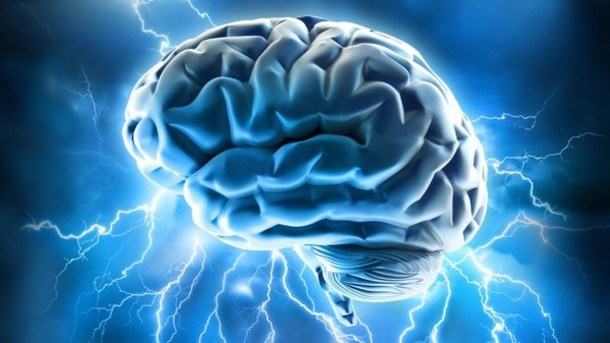Multiple Sclerosis (MS) is a chronic autoimmune disease with a complex and largely unknown etiology and pathophysiology (Korn, 2008)
It is currently estimated that some 2.1 million people worldwide suffer from MS, and it is thought to be the most frequent chronic neurological disease among young adults in the northern industrialized countries (Niedziela et al., 2014; Feliú et al., 2017). Currently there is no known cure for the disease, and its symptoms range from spasticity (feelings of stiffness/involuntary muscle spasms), severe pain, fatigue, bladder and bowel problems, and cognitive changes, amongst others (National MS Society). As a result, the need for effective and safe therapies to combat MS and potentially reverse the illness is urgent. A recently published 2017 review by Feliú et al. comprehensively assesses the pharmacology and efficacy of cannabidiol (CBD), a non-psychoactive constituent of the Cannabis plant approved in the treatment of inflammation, pain, and spasticity in patients with MS (2017).
Hallmark features of MS pathology entail inflammation, neuronal injury, and demyelination (the removal of the cells insulating neurons). Given CBD’s anti-inflammatory and immunomodulatory properties, it is a viable candidate for research as a potentially novel therapy in the treatment of MS (Feliú et al., 2017). This article will examine this newly published review along with various other studies that assess the efficacy of cannabis—mainly CBD—on such pathological features characterizing MS.
CBD is one of over 60 active constituents of the cannabis plant that, in and of itself, is non-psychoactive (Koppel et al., 2014). CBD has been shown to have anti-inflammatory effects that may be potentially useful in the treatment of neuroinflammatory disorders (Feliú et al., 2017).
CBD has also been shown to act as a “neuroprotective agent” through several mechanisms, such as “normalizing glutamate homeostasis, reducing oxidative stress, and attenuating glial activation…”(reviewed by Fernandez-Ruiz et al., 2013). It is this combination of properties that make CBD a promising candidate for MS treatment. CBD is thought to pharmacologically activate and modulate certain molecular pathways and cell signalling cascades that are known to impact the damaging inflammatory events that contribute to MS. Thus, CBD is a prime candidate as a therapeutic intervention into the disease.
One hallmark feature of MS is its immune-mediated inflammatory response, characterized by an increase in inflammatory factors called cytokines (such as IL-10 and TGF-b) by B and T white blood cells (Loma et al., 2011). Out of the two general types of immune responses, adaptive and innate, MS pathology identifies with the latter by way of influencing the effector functions on B and T cells (Loma et al., 2011). Despite the inflammation caused by this disease, the use of anti-inflammatory drugs may cause failure to repair inflammation as seen in patients with MS. This is thought to occur perhaps through these drugs triggering “counter-regulatory mechanisms used to heal injured tissue” (Martino et al., 2002).
Instead, as Carl Nathan notes in his 2002 Nature study, there is a need for the “conversion of the inflammation response from a damaging one to a healing one” (Nathan, 2002). Miraculously, CBD is thought to do just that through a mechanism in which it mitigates a phenomenon known as leukocyte rolling (Sundd et al., 2011). Leukocytes, also called white blood cells, travel to sites of injury and infection by leaving the circulatory system through the endothelial cells that form our blood vessels. This is caused by the adhesion of leukocytes to the vessel walls, after which they “roll” along the endothelial cells before migrating across (Sundd et al., 2011).
This “enhanced leukocyte trafficking” is characteristic of the MS pathology and can be an effective target for treatment by cannabinoids such as CBD. Mecha et al. demonstrated the novel therapeutic role of CBD in MS-induced rodent models by revealing its ability to downregulate proteins involved cell-cell connectivity known as adhesion molecules (such as VCAM-1) consequently attenuating microglial activation (the activation of microglia, the brain’s immune cells, leading to the autoimmune response) and thus neurodegeneration (Mecha et al., 2013).
This reduces the ability of leukocytes to adhere to the vessel walls and transmigrate towards points of inflammation secondary to MS. While reversing inflammation pathways are a seemingly crucial step in the treatment of this illness, it does not appear to be enough. The various mechanisms related to MS pathology require a multidimensional approach, as neuronal demyelination is another critical aspect to MS pathology that must be addressed.
Many of us understand that we have neurons in our brains that send electrical and chemical signals to other neurons. What many people may not realize is that a substance called myelin insulates our neurons, just like the rubber insulating an electrical wire. This myelin in the brain is made up of cells called oligodendrocytes, another cell type in the brain.
This insulation is vital for brain function, as it allows electrical signals to “hop” or “jump” across the nodes on a neuron, allowing for a faster and more efficient signaling called “salutatory conduction” (Nave et al., 2014). MS is characterized by widespread “demyelination and neuronal injury in the brain and spinal cord” (Feliú et al., 2017). Fortunately, endogenous systems in the body can be stimulated to induce a phenomenon called remyelination. As the name implies, remyelination results in the generation of new, mature oligodendrocytes that restore the myelin insulation on the demyelinated axon sheaths and even restore function (Feliú et al., 2017). A study by Giacoppo et al. demonstrated “a marked remyelination following 1% CBD-cream treatment” in spinal cord samples. Such an approach could constitute the “conversion of the inflammation response from a damaging one to a healing one,” as per Carl Nathan’s Nature study referenced above (Nathan, 2002).
A systematic review of the safety and efficacy of cannabis in various neurological disorders demonstrated patient-reported relief from MS-related spasticity upon consumption of oral cannabis extract (OCE) (Koppel et al., 2014). While objective measurements for the efficacy of cannabis were not always significant, patients reported significant improvement in their pain, perhaps due to feelings of well-being and the pain relief from the medication, as reported by Koppel (2014).
Pro- and anti-cannabis advocates use this same finding as ammunition for their cause: those against cannabis argue that the lack of progress in objective improvements demonstrates the ineffectiveness of cannabis to treat MS, and those who are pro-cannabis claim that objective measures don’t matter if the patients reportedly feel better when using the drug. Koppel’s paper also showed improved sleep in MS patients who used the THC-CBD formulation (Koppel et al., 2014). Considering that MS related pain is purportedly one of the most excruciating, this author strongly believes cannabis should be used for the treatment and relief of MS symptoms.
However, while CBD’s effectiveness as a therapy for several aliments, MS included, is becoming more apparent, the mechanisms behind its medicinal functions are still enigmatic. The pharmacological activity of CBD, for example, is particularly unique, in that “to date, there is no evidence about the full binding of CBD to any known receptor site” (Feliú et al., 2017).
CBD has been shown to modulate and affect activity at various receptors beyond CB1 and CB2, including serotonin and opioid receptors. Even more fascinating is the fact that CBD actually potentiates the body’s endogenous cannabinoid system by inhibiting mechanisms that inactive the body’s endocannabinoids while also increasing overall endocannabinoid tone (Bisogno et al., 2001; De Filippis et al., 2008). Endocannabinoid tone is best described by Russo in his 2016 paper as the “underlying levels of anandamide and 2-AG, their production, metabolism, and the relative abundance and state of cannabinoid receptors” in all humans (Russo, 2016). Imbalances in endocannabinoid tone is the subject of the popular new theory in cannabis research of “endocannabinoid deficiency” as described by Russo (2016). Such a theory would provide further support toward treatment with exogenous cannabinoids to potentially mitigate and possibly reverse these deficiencies.
The sheer pharmacological versatility and complexity of CBD paired with the emerging data about its efficacy in MS treatment and clearly warrants further investigation into CBD as a novel tool in the fight against MS and related illnesses. The lack of psychoactivity exhibited by CBD further bolster this sentiment, especially amongst medical professionals. Furthermore, the fact that CBD has demonstrated incredibly low toxicity in both humans and other species make it an attractive treatment option over more toxic alternatives (Rosenkrant et al., 1981). The neuroprotective, anti-inflammatory and immunomodulatry effects of CBD in neurological disease states continues to be an exciting, promising, and necessary area of research that shows promise for this relatively widespread and debilitating illness.
References
Bisogno, T., Hanuš, L., De Petrocellis, L., Tchilibon, S., Ponde, D. E., Brandi, I., . . . Di Marzo, V. (2001). Molecular targets for cannabidiol and its synthetic analogues: Effect on vanilloid VR1 receptors and on the cellular uptake and enzymatic hydrolysis of anandamide. British Journal of Pharmacology, 134(4), 845-852. doi:10.1038/sj.bjp.0704327
De Filippis, D., Iuvone, T., D’amico, A., Esposito, G., Steardo, L., Herman, A. G., . . . De Man, J. G. (2008). Effect of cannabidiol on sepsis-induced motility disturbances in mice: Involvement of CB1 receptors and fatty acid amide hydrolase. Neurogastroenterology & Motility, 20(8), 919-927. doi:10.1111/j.1365-2982.2008.01114.x
Fernández-Ruiz, J., Sagredo, O., Pazos, M. R., García, C., Pertwee, R., Mechoulam, R., & Martínez-Orgado, J. (2013). Cannabidiol for neurodegenerative disorders: Important new clinical applications for this phytocannabinoid? British Journal of Clinical Pharmacology, 75(2), 323-333. doi:10.1111/j.1365-2125.2012.04341.x
Giacoppo, S., Galuppo, M., Pollastro, F., Grassi, G., Bramanti, P., & Mazzon, E. (2015). A new formulation of cannabidiol in cream shows therapeutic effects in a mouse model of experimental autoimmune encephalomyelitis. DARU Journal of Pharmaceutical Sciences, 23, 10.1186/s40199-015-0131-8. doi:131 [pii]
Koppel, B. S., Brust, J. C. M., Fife, T., Bronstein, J., Youssof, S., Gronseth, G., & Gloss, D. (2014). Systematic review: Efficacy and safety of medical marijuana in selected neurologic disorders: Report of the guideline development subcommittee of the american academy of neurology. Neurology, 82(17), 1556-1563. doi:NEUROLOGY2013552075 [pii]
Korn, T. (2008). Pathophysiology of multiple sclerosis. Journal of Neurology, 255 Suppl 6, 2-6. doi:10.1007/s00415-008-6001-2 [doi]
Kutzelnigg, A., Faber-Rod, J. C., Bauer, J., Lucchinetti, C. F., Sorensen, P. S., Laursen, H., . . . Lassmann, H. (2007). Widespread demyelination in the cerebellar cortex in multiple sclerosis. Brain Pathology (Zurich, Switzerland), 17(1), 38-44. doi:BPA041 [pii]
Loma, I., & Heyman, R. (2011). Multiple sclerosis: Pathogenesis and treatment. Current Neuropharmacology, 9(3), 409-416. doi:CN-9-409 [pii]
Martino, G., Adorini, L., Rieckmann, P., Hillert, J., Kallmann, B., Comi, G., & Filippi, M.Inflammation in multiple sclerosis: The good, the bad, and the complex. The Lancet Neurology, 1(8), 499-509. doi:10.1016/S1474-4422(02)00223-5
Mecha, M., Feliú, A., Carrillo-Salinas, F. J., & Guaza, C. (2017). Chapter 93 – cannabidiol and multiple sclerosis. In V. R. Preedy (Ed.), Handbook of cannabis and related pathologies (pp. 893-904). San Diego: Academic Press. doi:https://doi.org/10.1016/B978-0-12-800756-3.00108-3
Mecha, M., Feliu, A., Inigo, P. M., Mestre, L., Carrillo-Salinas, F. J., & Guaza, C. (2013). Cannabidiol provides long-lasting protection against the deleterious effects of inflammation in a viral model of multiple sclerosis: A role for A2A receptors. Neurobiology of Disease, 59, 141-150. doi:10.1016/j.nbd.2013.06.016 [doi]
Nathan, C. (2002). Points of control in inflammation. Nature, 420(6917), 846-852. doi:10.1038/nature01320 [doi]
Nave, K. A., & Werner, H. B. (2014). Myelination of the nervous system: Mechanisms and functions. Annual Review of Cell and Developmental Biology, 30, 503-533. doi:10.1146/annurev-cellbio-100913-013101 [doi]
Niedziela, N., Adamczyk-Sowa, M., & Pierzchala, K. (2014). Epidemiology and clinical record of multiple sclerosis in selected countries: A systematic review. The International Journal of Neuroscience, 124(5), 322-330. doi:10.3109/00207454.2013.840618 [doi]
Rosenkrantz, H., Fleischman, R. W., & Grant, R. J. (1981). Toxicity of short-term administration of cannabinoids to rhesus monkeys. Toxicology and Applied Pharmacology, 58(1), 118-131. doi:0041-008X(81)90122-8 [pii]
Russo, E. B. (2016). Clinical endocannabinoid deficiency reconsidered: Current research supports the theory in migraine, fibromyalgia, irritable bowel, and other treatment-resistant syndromes . Cannabis and Cannabinoid Research, 1(1)
[Featured image credit- Flickr]








